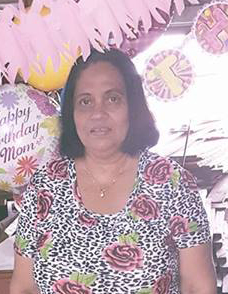The young man accused of killing Mahaicony businesswoman Bibi Shairoon Nesha Ali back in 2016 is likely to know his fate later today when a jury deliberates on a verdict.
For legal reasons, the name and identity of the accused who was a juvenile at the time, has to be withheld from publication.
The then 14-year-old is alleged to have murdered Ali during a robbery at her Lot 4 Novar, Mahaicony, East Coast Demerara home sometime between October 15th and 17th of 2016.
Given a chance to lead his defence yesterday following the close of the prosecution’s case, the now 18-year-old professed his innocence, remaining resolute that he had nothing to do with the woman’s murder, nor does he know anything about it.
In unsworn testimony from the Lusignan Prison where he attended his trial virtually, the teen said that he loved “Aunty Shakeela” as Ali was fondly called; and that he did nothing to her.
During his closing address yesterday, defence attorney Bernard Da Silva described the prosecution’s case against his client as a weak one, and asked the jury to so find, acquit the teen and send him home.
He particularly took issue with the fingerprint evidence which the state said it had linking the teen to the crime.
On this point Da Silva questioned the plausibility of just a single print from the little finger of the accused being left on a wardrobe in one of the bedrooms of the woman’s house.
Assuming but not admitting that the print was left by the lad, the lawyer went on to question what had happened to prints from his other fingers.
Prosecutor Tuanna Hardy, however, fired back, advancing that the rock-solid science by which fingerprinting analysis is supported cannot be explained away.
She said that while the defence had spent much of its time questioning the likelihood of the presence of a single print from the little finger of the accused, it deliberately did not address how the print got there or what it was doing there in the first place.
Urging the jury not to be distracted by counsel’s chatter, Hardy said that the real question to be interrogated is why the print was there—whether it was a single print or multiple. “The evidence is what it is,” she declared.
She also asked the jury to rely on the testimony of Ali’s sister who had said that the deceased had prior problems with the accused who had threatened to kill her and for which she had made a police report.
Against this background Hardy surmised that there can be no further explanation from the accused as to why his prints were at the scene even as she added that he could not and did not say that he may have at some time assisted the woman in lifting or moving the wardrobe.
Da Silva contended that the integrity of the chain-of-custody and movement of samples for analysis could have been compromised as he maintained his client’s innocence and non-involvement in the crime.
Hardy said that while the state’s case is circumstantial, it was a strong one since all the circumstances lined up to paint a full picture of the teen’s involvement.
On this point she also asked the jury to rely on the testimony from a neighbour of the dead woman who reported seeing the accused in the area on a night and around a timeframe Ali is believed to have been murdered.
Referencing the pathologist’s testimony that Ali was likely sexually assaulted, Da Silva asked why it was that no DNA analysis was done and presented by the prosecution which would have bolstered its case.
Hardy in response, however, said that the fingerprint evidence by itself is sound enough and that there was no need for DNA evidence.
But Da Silva said that this was another piece of evidence the prosecution had at its disposal and chided it for not so utilizing even as he again urged the jury not to convict his client on the “weak” fingerprint evidence presented by the state.
Also of issue to Da Silva was the fact that a frying pan which was the alleged murder weapon had not been dusted for fingerprints nor the room in which Ali’s body was found.
The prosecutor said that though circumstantial, the state’s case against the accused was cogent and asked the jury to find him guilty as charged.
When the case is called this morning, Justice Navindra Singh is expected to make his summation and then hand it over to the jury to deliberate on a possible verdict.
Ali, who lived alone, was found in her home on October 17th, 2016 bound and gagged and her body partially decomposed. The shop which she operated at the premises was ransacked. Boards were removed from the side of the shop through which the intruder/s gained entry.
Fingerprinting expert Inspector of Police Lalbachand Dial had testified that he analyzed a number of latent fingerprint samples taken from the teen, and it was found that his prints matched samples extracted from a wardrobe in one of the rooms of the dead woman’s house.
That match was made to one of the teen’s little fingers.
Dial had said that samples of other fingers were also submitted but because of the presence of smears and smudges they could not be analyzed since they lacked the needed ridge characteristics to so do.
Pathologist Dr. Nehaul Singh said his autopsy revealed that Ali died from bleeding of the brain due to blunt trauma to the head.






